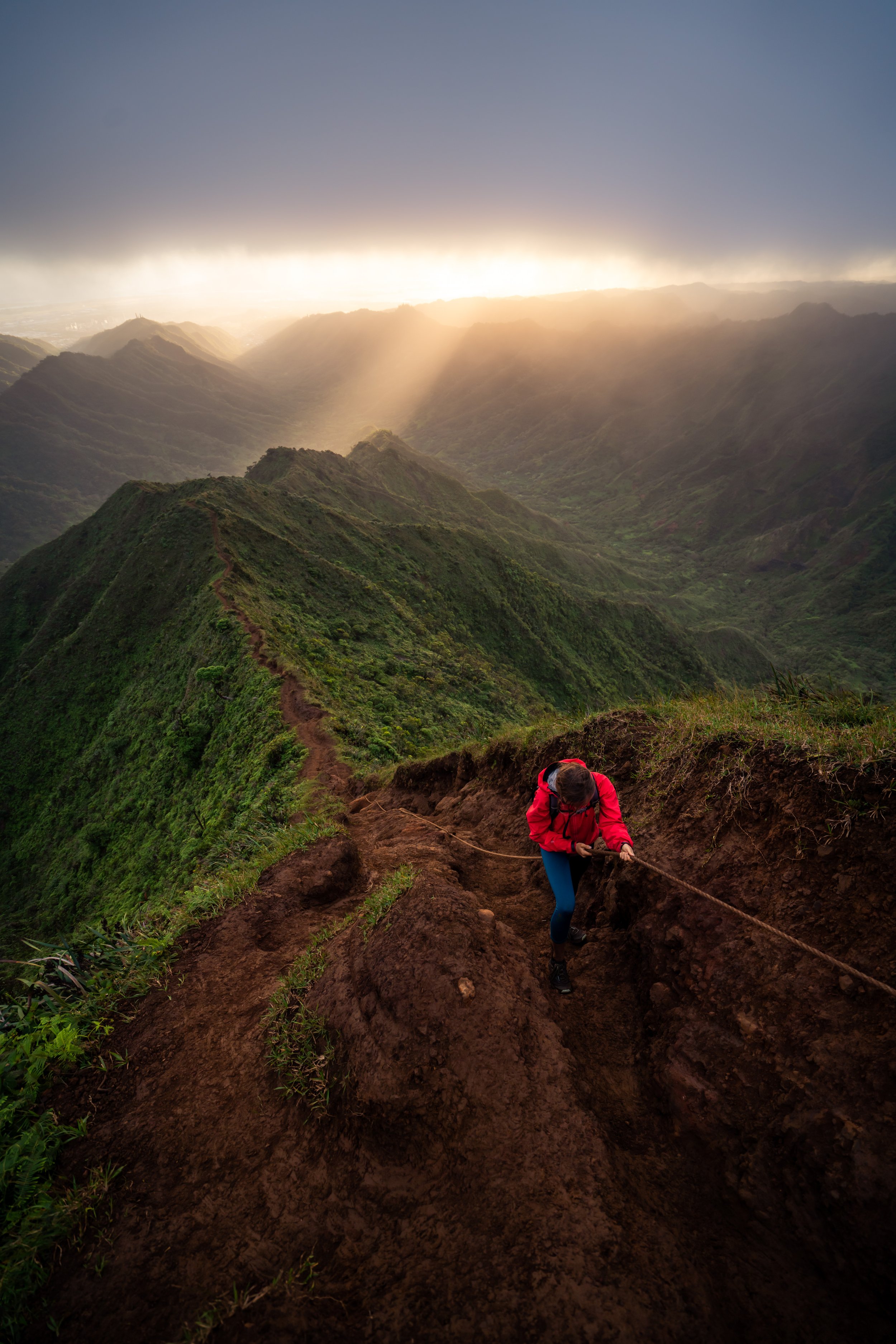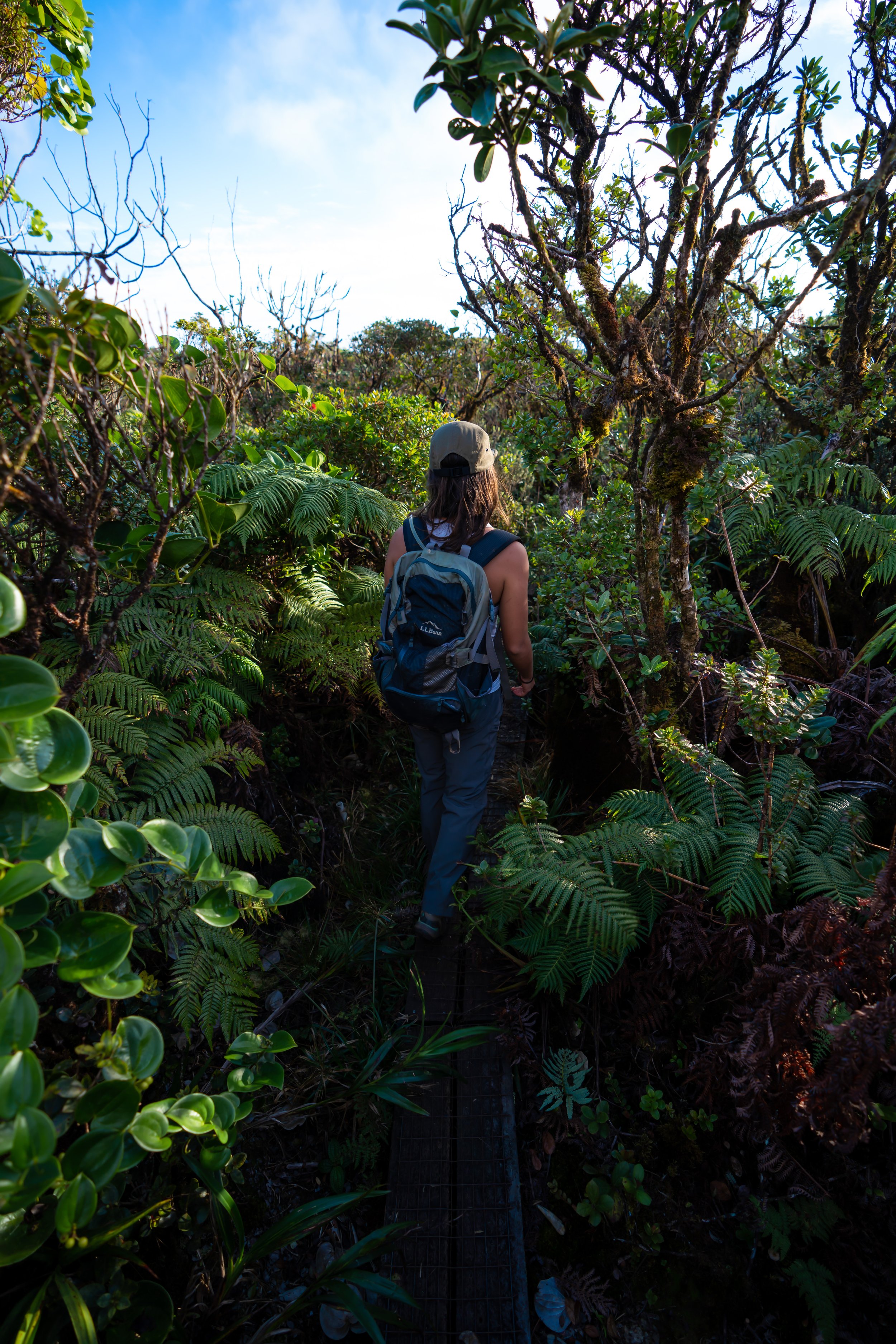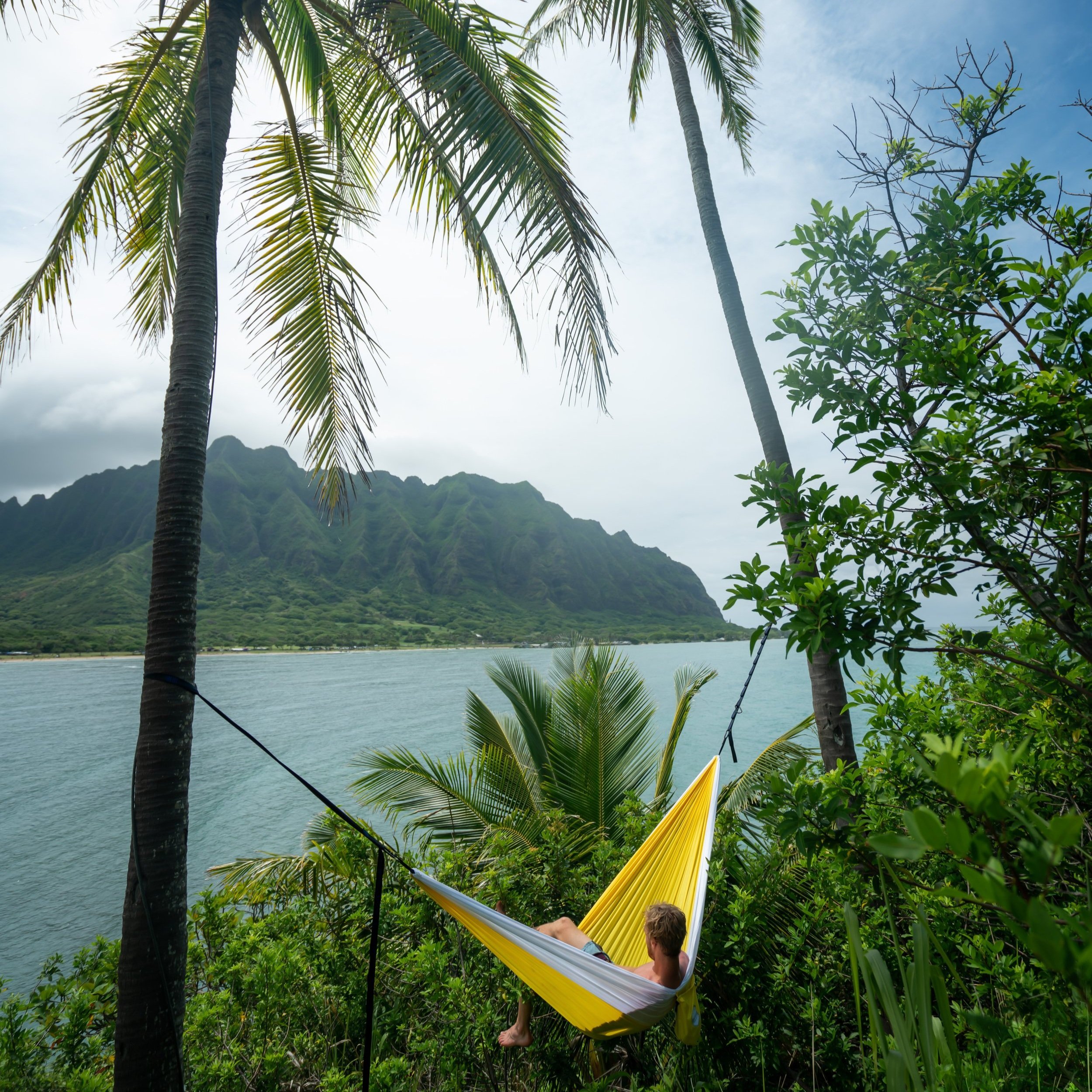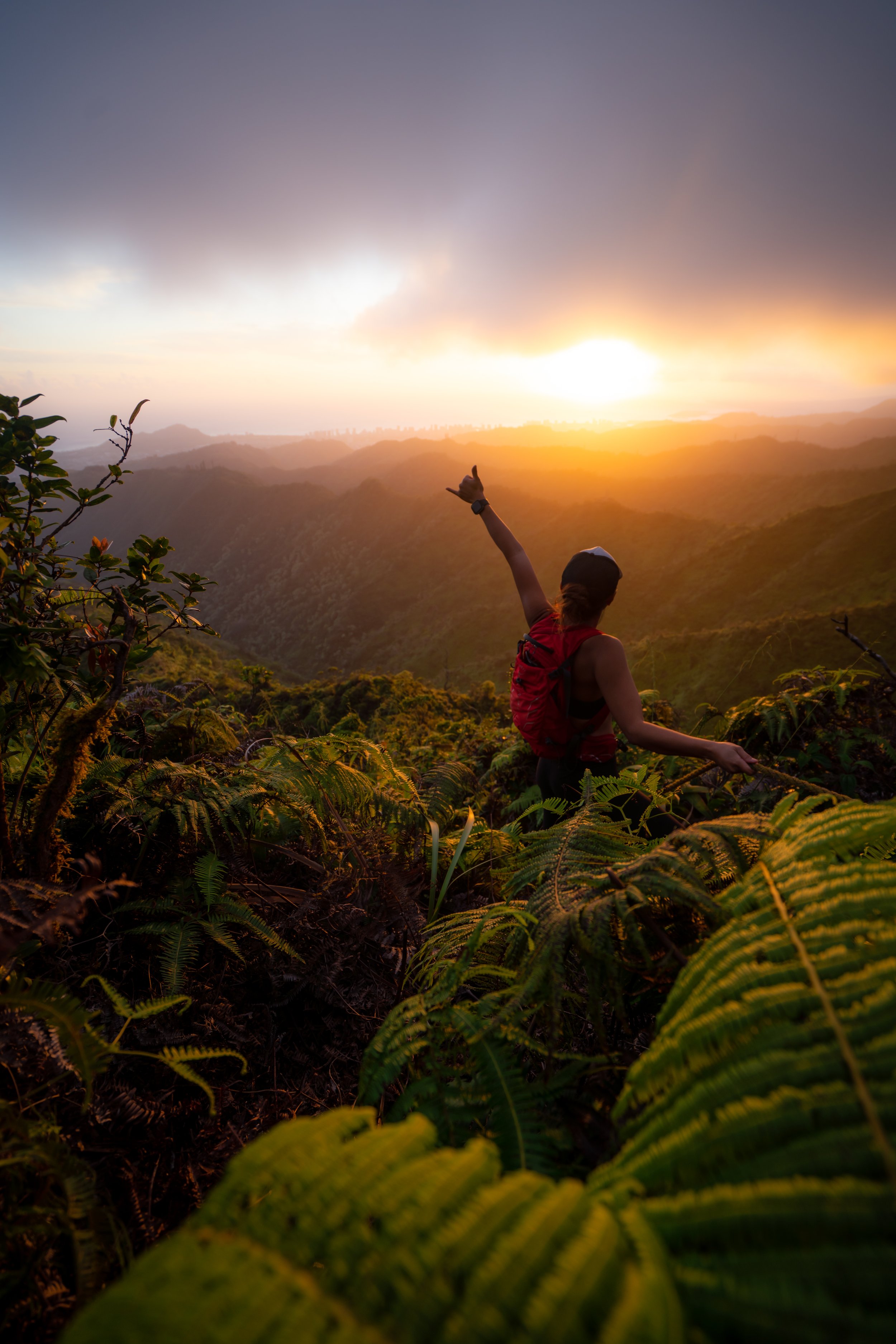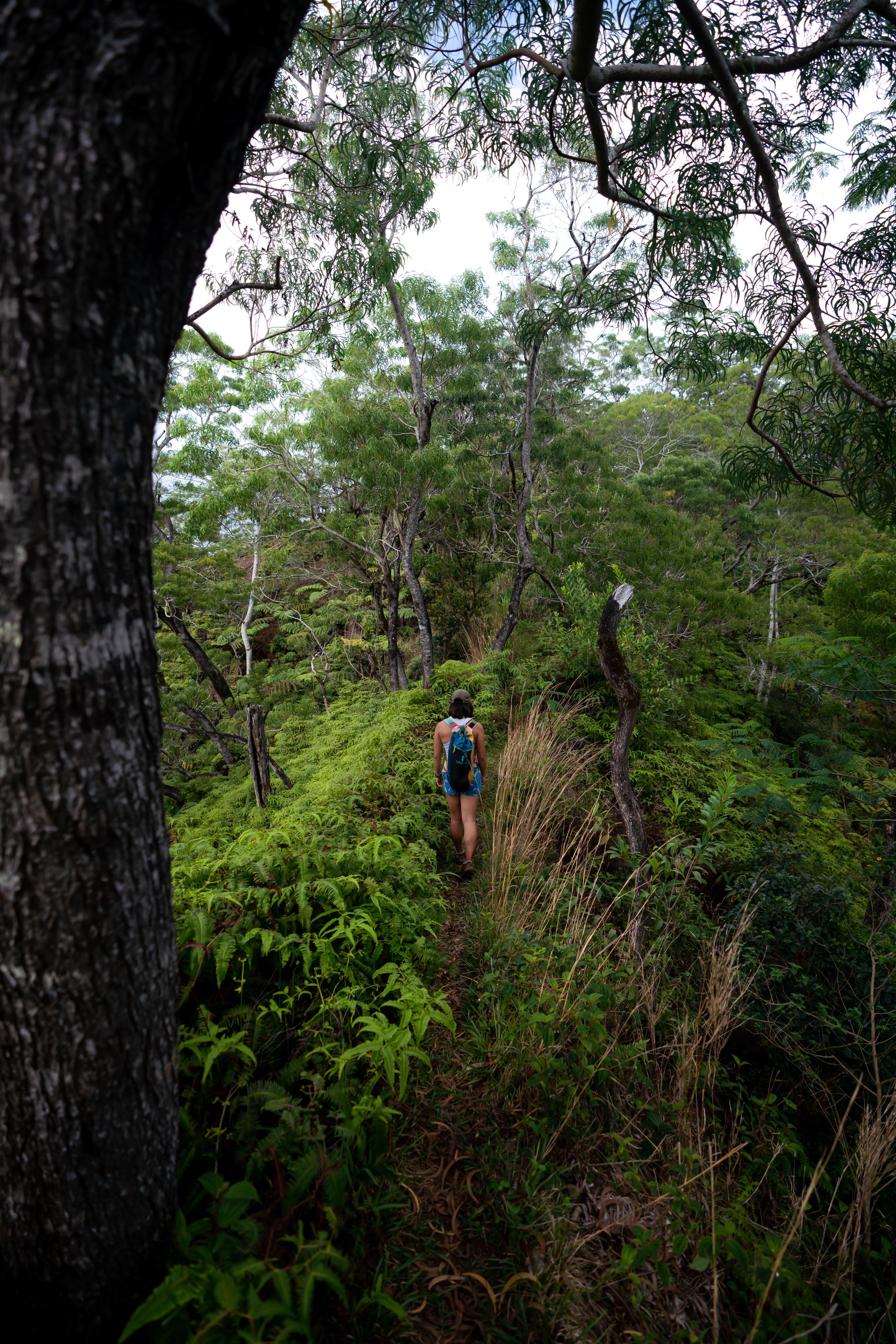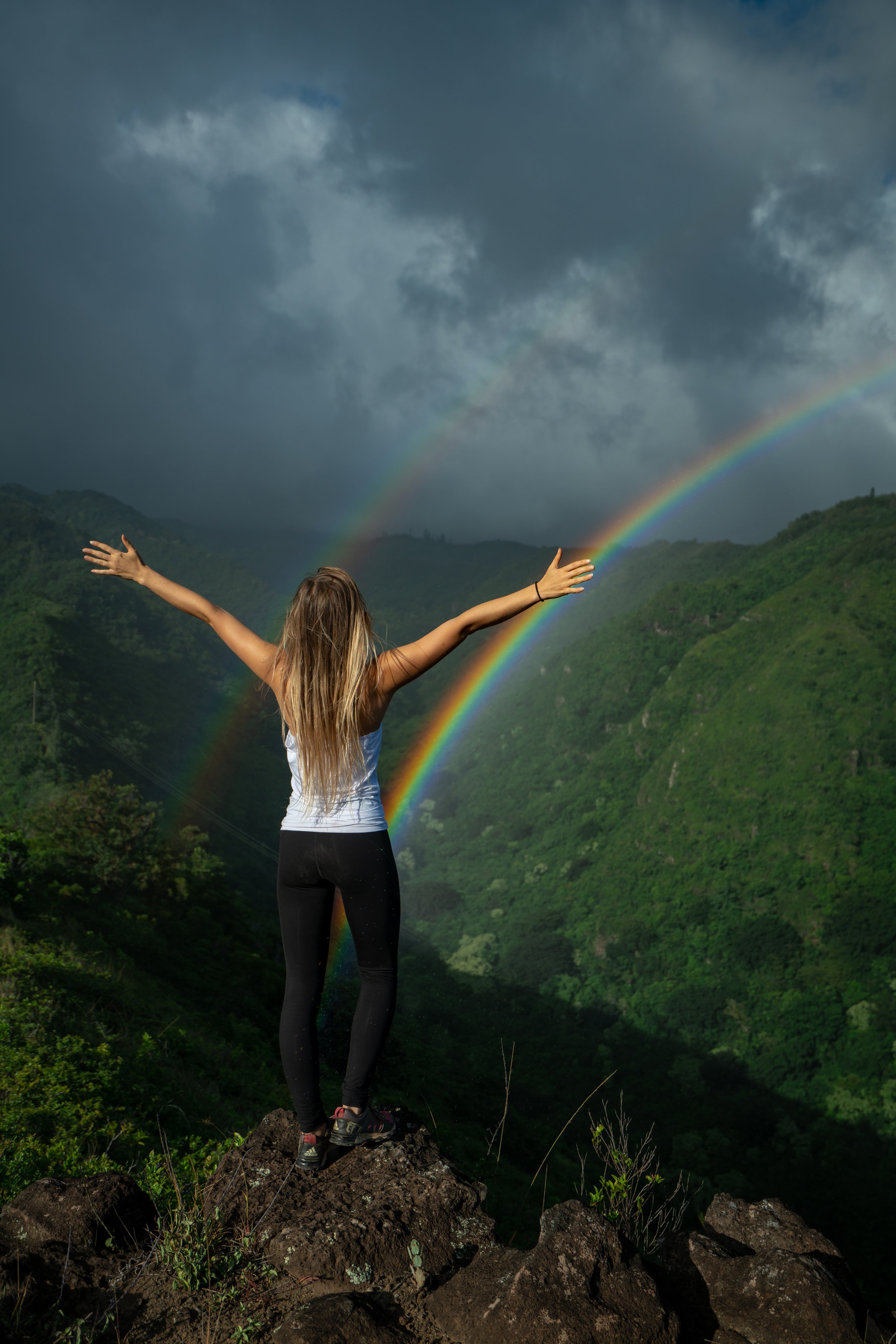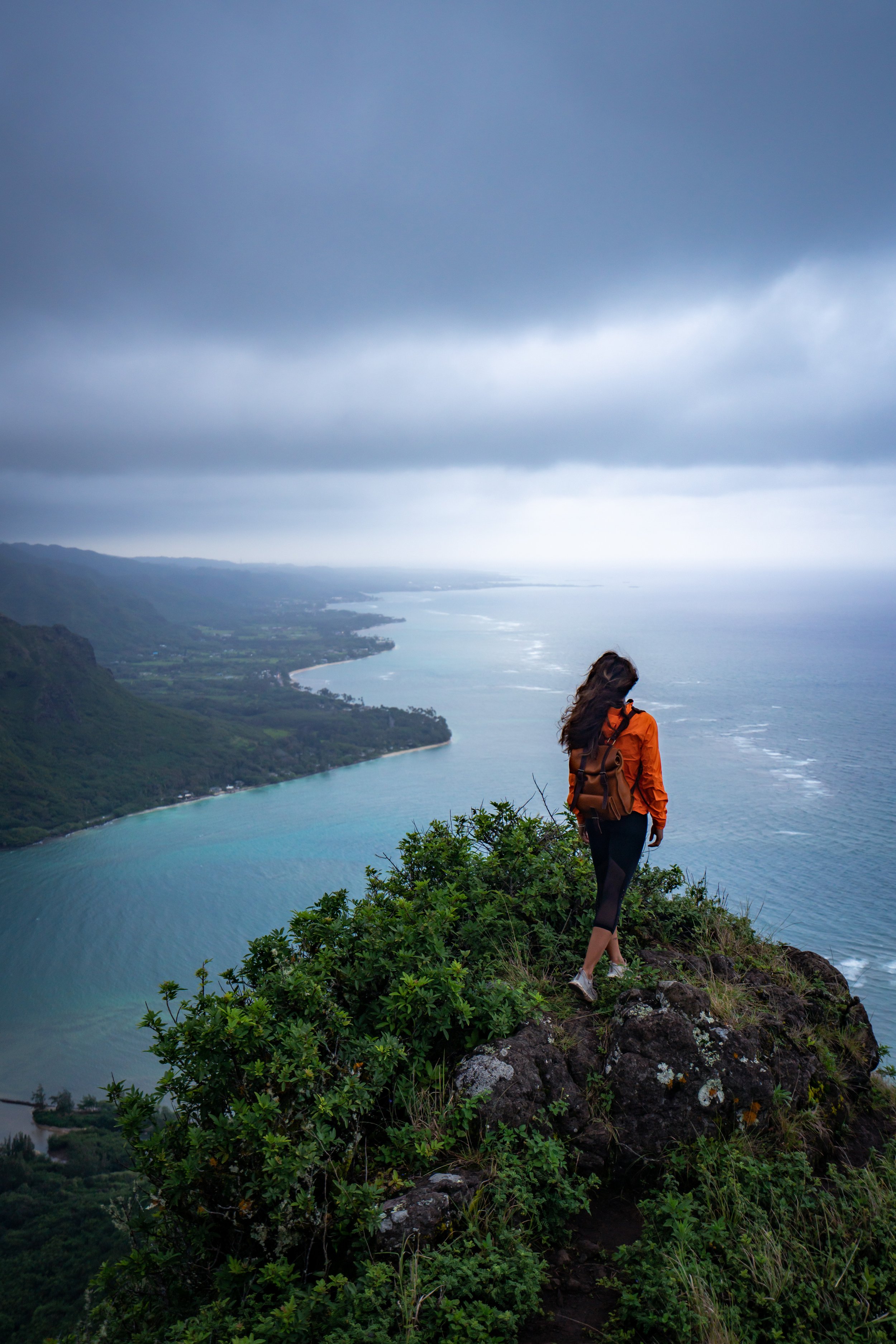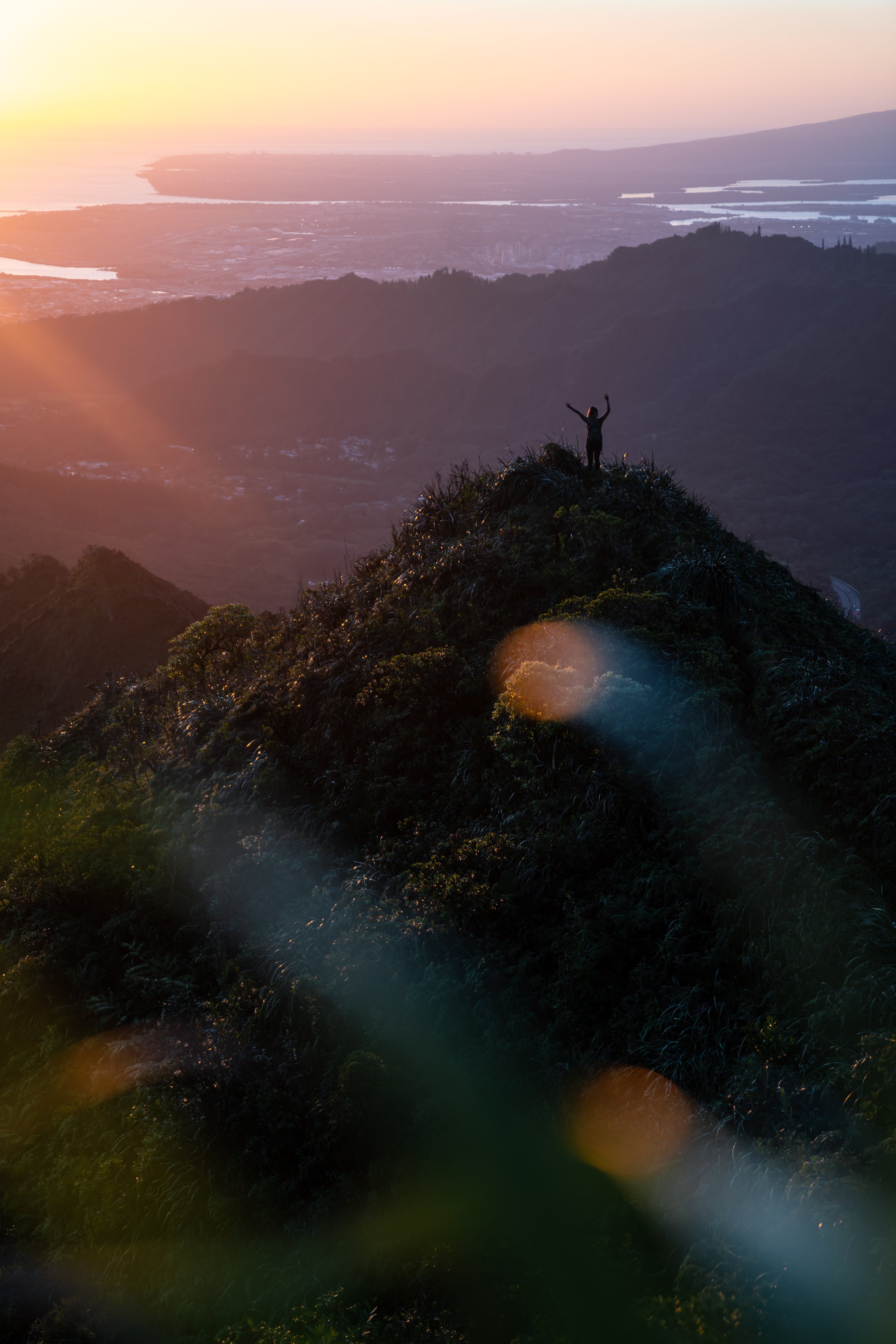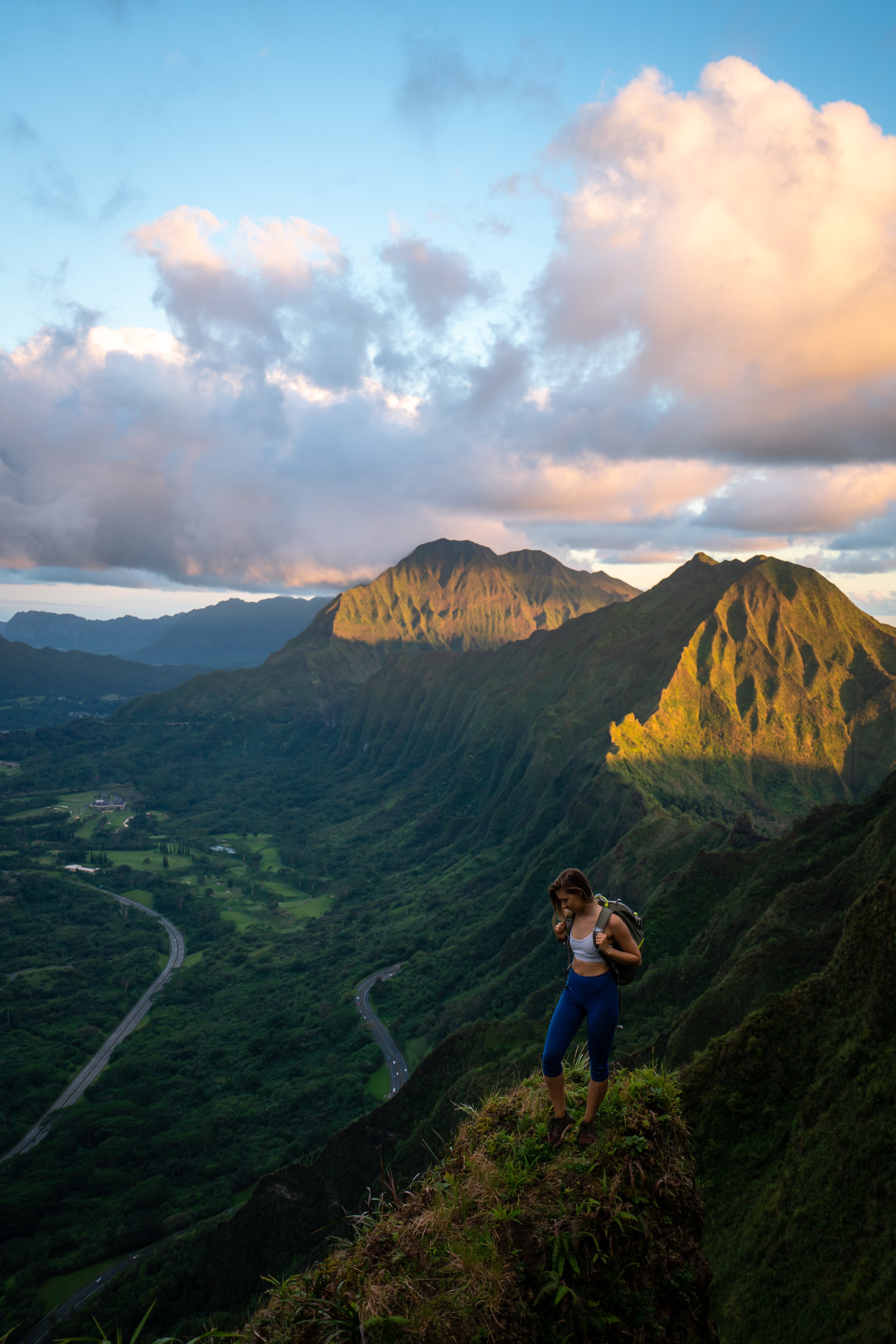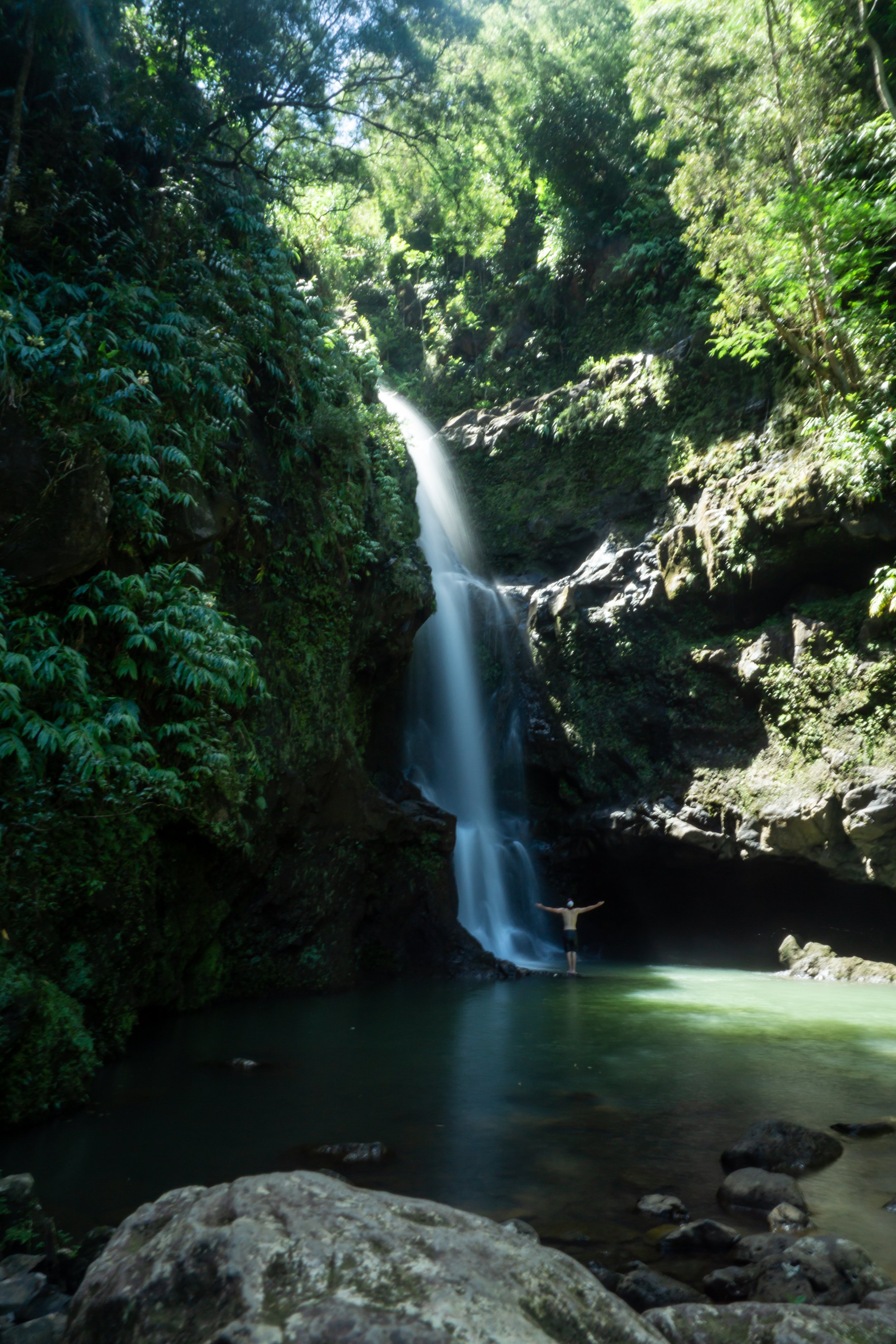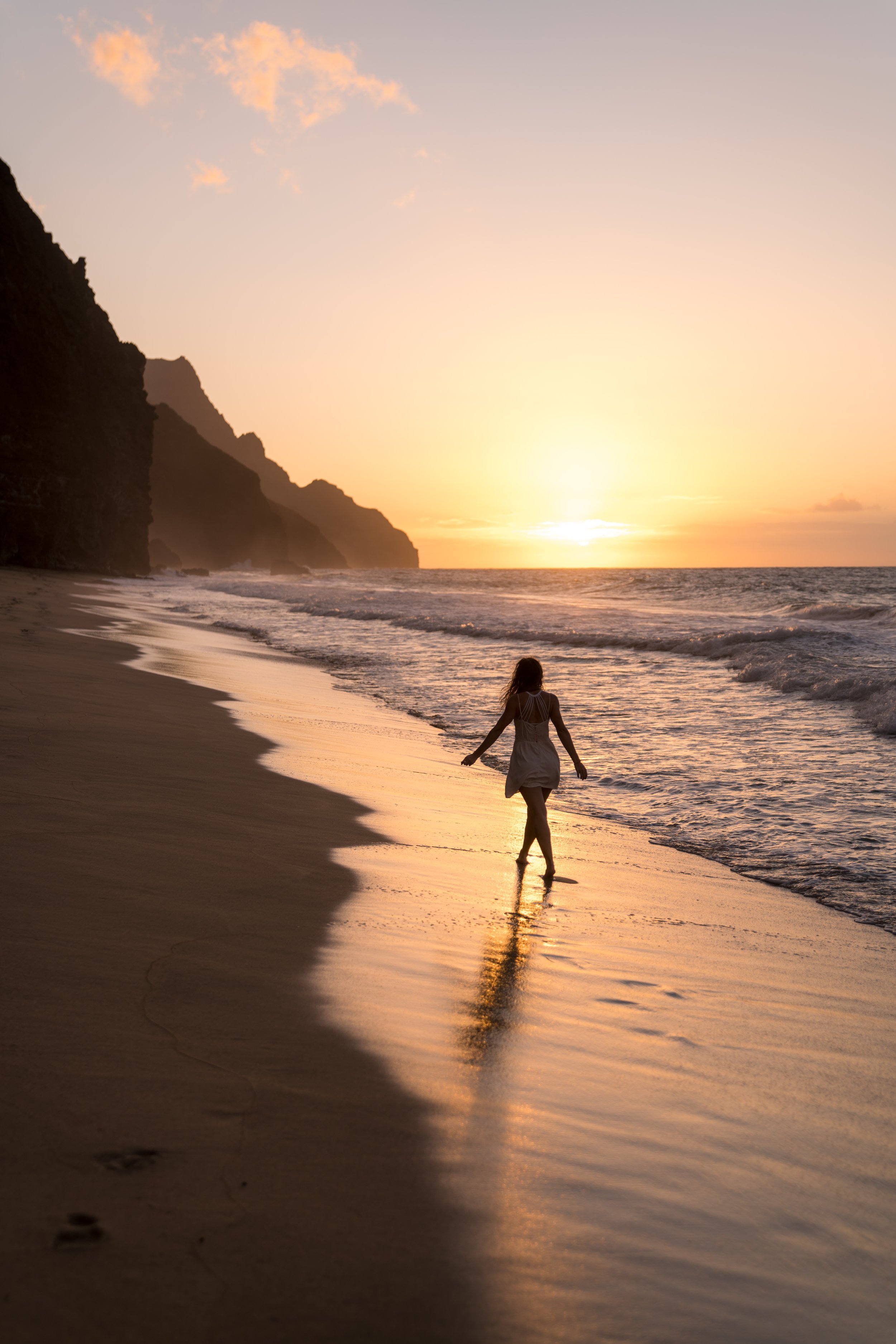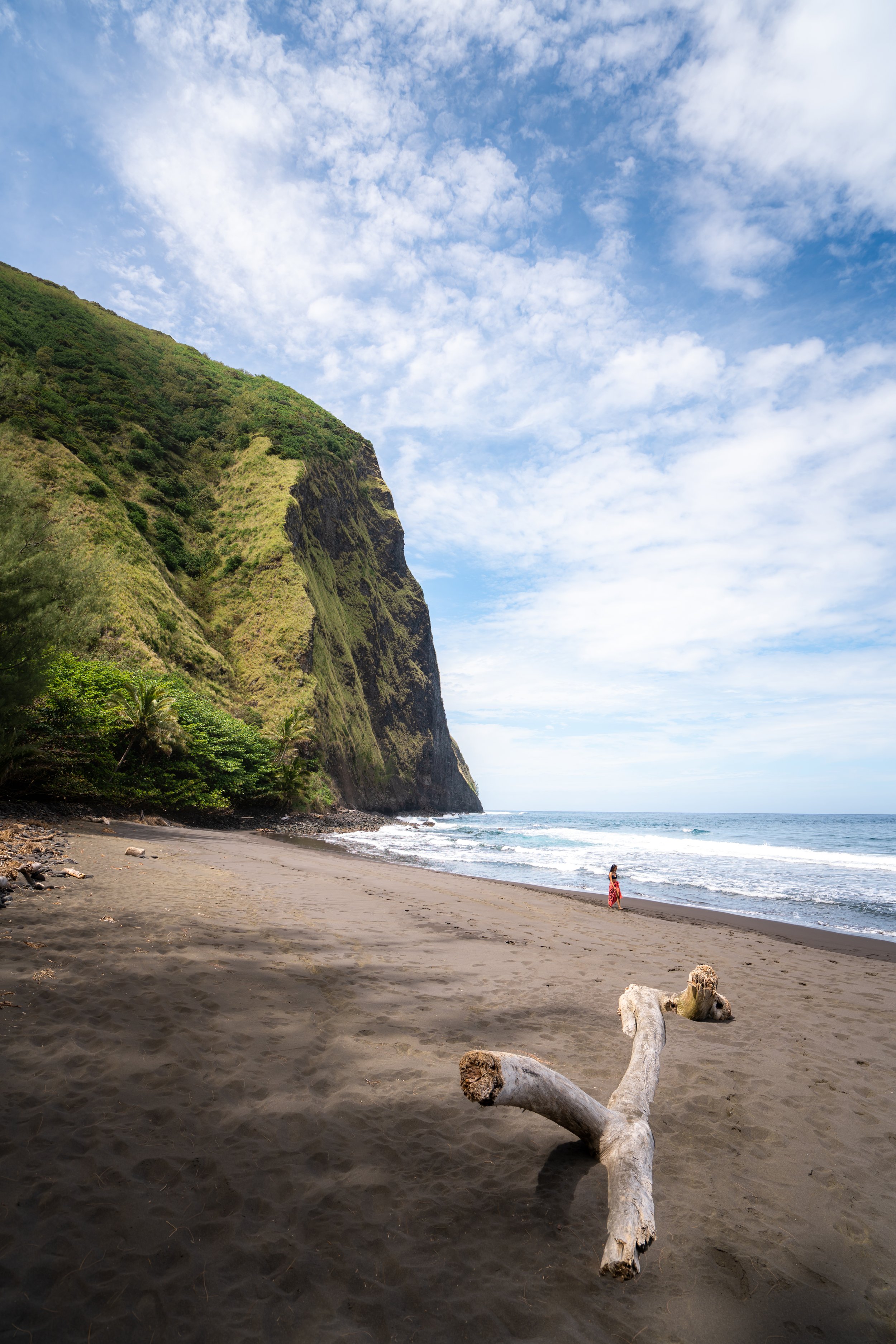Hiking the Kulanaʻahane Trail to the Moanalua Saddle on Oʻahu, Hawaiʻi
Distance: 11.2 miles / 18.0 km
Elevation Gain: ~1,400 ft. / 427 m
The Kulanaʻahane Trail in central Oʻahu is a little-known adventure through the bottom of Moanalua Valley, ultimately ending at the Moanalua Saddle where it overlooks the beautiful Haʻikū Valley and H-3 Freeway.
That being said, very few hikers in Moanalua Valley are there for the Kualaʻahane Trail, as the vast majority of those hiking in Moanalua are there to attempt to access the Stairway to Heaven, often ending up on the Kulanaʻahane Trail by mistake.
In any case, the Moanalua Valley Trail to Kulanaʻahane is a great day hike for those looking to explore one of the island’s least-visited trails, and the views at the end truly speak for themselves!
Moanalua Valley Trailhead Parking
Parking for the Kulanaʻahane Trail is located in the very back of Moanalua Valley, just prior to the Moanalua Valley Neighborhood Park.
Yes, if you’re only there to access to the trail, parking is not allowed within Moanalua Valley Neighborhood Park, and you may receive a citation on your vehicle for doing so upon returning.
Google Maps Directions: Kulanaʻahane Trailhead
My Hawaiʻi Hiking Checklist
Osprey 3L Water Bladder - The Osprey 3L water bladder is the most universal hiking and backpacking water bladder on the market, and it’s my go-to because of the slide-off seal that allows it to be quickly filled from the top. Additionally, individual parts are easily replaceable, such as the bite valve.
Blister / Heel Protectors - I swear by these cheap, amazing heel protectors to prevent blisters for nearly every kind of hiking and backpacking that I do!
Black Diamond Headlamp - Personally, I recommend the Black Diamond Storm because it is one of the brightest, lightest, and longest-lasting headlamps on the market—and trust me, the weight-to-battery-life ratio really does matter!
Hiking / Trail Running Shoes - Depending on the type of trail, I prefer to use either the Keen Targhee for longer, more rugged hiking or the HOKA Zinal Trail-Running Shoe for lighter, less intense trails. In either case, both have been amazing to me for many years across countless environments, and both can be found in men’s and women’s sizes. - (Men’s Keen / Women’s Keen) (Men’s HOKA / Women’s HOKA)
Waterproof Rain Shell - You never know when it may rain, and I’ve learned over the years that a rain shell is far better than a rain jacket. By this, I mean that it’s best to have something that the water will roll right off of, which is why I recommend the Patagonia Torrentshell 3L available in both men’s and women’s sizes.
High SPF Sunscreen - Packing high-SPF sunscreen is a must for long days outside!
Hiking the Kulanaʻahane Trail
At the back of the Moanalua Valley Neighborhood Park, the trail to Kulanaʻahane begins on the Moanalua Valley Trail for the first 2.9 miles (4.7 km).
Kamananui Valley Road
As the Moanalua Valley Trail follows the Moanalua Stream, know that it’s generally easiest to stay on the high path whenever the trail splits to avoid unnecessary ups and downs.
The photo below is one of the first bridges that you will encounter in Moanalua Valley, which is easiest to stay on the left-hand side.
When the trail opens up to this big clearing in the photo below, go right to continue on Kamananui Valley Road toward the start of Kulanaʻahane.
This section of the Kamananui Valley Road is notorious for being very muddy, and that’s why there are a number of side trails through the trees that people have made, as this section never seems to dry out.
Moanalua Valley-Kulanaʻahane Junction
After about 2.9 miles (4.7 km) on the Moanalua Valley Trail, the Kulanaʻahane Trail splits from Kamananui Valley Road on the left-hand side.
Here, go left to cross over the Moanalua Stream, and the Kulanaʻahane Trail will split with the Moanalua Middle Ridge Trail immediately following.
Kulanaʻahane-Moanalua Middle Ridge Junction
Immediately after the trail crosses the Moanalua Stream, the Kulanaʻahane splits with the Moanalua Middle Ridge.
At this split, go left to begin Kulanaʻahane up to the Moanalua Saddle, about 2.7 miles (4.3 km) away.
If you are interested in reading about the full Moanalua Middle Ridge Trail to the Koʻolau Summit, check out my separate article linked below.
Read My Separate Post: Moanalua Middle Ridge Trail
As I’m sure it’s obvious from photo below, the Kulanaʻahane Trail will make you very familiar with Hau, a native bushy tree that’s sometimes referred to as Hau bush.
Much of the Kulanaʻahane Trail is passes through this entanglement of Hau trees, but generally speaking, they are not much of an issue in terms of navigating through them.
North Fork of the Moanalua Stream
When the Moanalua Valley has been receiving enough rain, the stream may be flowing, which can make for a beautiful place to cool off on a hot day.
However, I caution against swimming if the water isn’t moving because of the infectious Leptospirosis, which is found in many streams across Hawaiʻi.
Kulanaʻahane Ridge
When the trail crosses the North Fork for the final time, the Kulanaʻahane Trail begins ascending the Kulanaʻahane Ridge Trail, which leads up to the Moanalua Saddle.
This final ascent climbs just under 300 ft. (91 m) in about 0.25 miles (0.4 km) to the end of the trail.
Moanalua Saddle (Koʻolau Summit Trail)
From the end of the Kulanaʻahane Trail, which is also the bottom of the Moanalua Saddle, you’ll have expansive views of the Haʻikū Valley and Kāneʻohe to the east.
Some of the other notable hikes that you can see from the top include the Kalāheo and Oneʻawa Hills.
On a different note, this is all without saying that the end of the Kulanaʻahane Trail is an access trail for the Koʻolau Summit Trail (KST).
That being said, do not hike past the initial summit if you weren’t planning on continuing further or if you ended up here by mistake while trying to get to Stairway to Heaven.
I say this because all three saddles along the Koʻolau Summit—Nuʻuanu, Kalihi, and Moanalua—are the trickiest and most technically challenging sections of the entire cross-island hike, meaning they are absolutely beyond most people’s hiking ability!
I only say this from a place of respect and caution, and on the day I took these photos, we ran into two fit guys who were attempting to reach the stairs but ended up at the saddle by mistake. After hearing our advice to turn around and not continue toward Stairway, they overconfidently proceeded anyway.
When they left, our group sat and watched them hike up the south side of the saddle to the first tricky section where they had almost immediately put themselves in a dangerous situation on the first climb. However, after about a half an hour of failed attempts to try and navigate the first climb, they both thankfully made the right decision to turn back.
Again, I say all of this as a friendly reminder, as I have lived through the worst possible outcome of losing a good friend here in Hawaiʻi.
Read My Separate Post: Koʻolau Summit Trail (KST)
Native Plants in the Moanalua Valley
Outside of a few native plant restoration sites in the Moanalua Valley, trek through the lower elevations of the forest is heavily invaded with non-native, invasive species, like Strawberry Guava and the Kukui tree, a canoe plant that has proven to carry invasive tendencies.
However, Hau trees that were mentioned above are one of the seven native Hibiscus species in Hawaiʻi, and as the Kulanaʻahane Ridge Trail rises up from the valley floor at the end of the hike, there are many more native plants to find like ʻŌhiʻa lehua, Uluhe, Koa, and if you’re lucky, you may find an ʻOhe Mauka tree.
If you would like to learn more about these and many other native Hawaiian plants from across the islands, I encourage you to check out my separate post linked below.
Read My Separate Post: Native Hawaiian Plant Guide
More Oʻahu Adventures
If you’re interested in reading about some more amazing Oʻahu adventures, check out my separate posts below!
Best Hotels & Restaurants in Waikīkī
If you’re trying to decided where to stay on Oʻahu, check out my top 10 list for the best resorts and restaurants in Waikīkī.
I break down what makes one hotel a better choice over another, so that you can find the best fit for your stay on the island.
Read My Separate Post: Best Waikīkī Hotels & Restaurants
HNL Airport-Hotel Shuttle
Prices on ride-share apps like Uber/ Lyft cannot beat the price of booking your hotel shuttle prior to arrival. I say this because there are additional fees for ride-share airport pick-ups at Honolulu Airport (HNL), which is why I recommend booking your transportation in advance using the options below.
Additionally, the last option below will go as far as the Ko ʻOlina Resorts on the West Side and Turtle Bay on Oʻahu’s North Shore!
Best Way to Book Rental Cars!
I travel quite a bit, and I know firsthand that finding a good rental car deal can be a challenge, but that’s why I recommend comparing all of your options with Discover Cars.
In short, Discover Cars is a well-known, reputable business that allows you to search for the best deal across companies, and they have the best full-refund cancellation policy I’ve ever seen, valid up to 72, or sometimes even 48, hours prior to your reservation!
Book Here: Discover Cars
Visiting Other Islands
If you are visiting Oʻahu or heading to another island, check out some of my personal recommendations for Oʻahu, Maui, Kauaʻi, Molokai, Lānaʻi, and Hawaiʻi Island (Big Island) in these separate posts.
If you’re trying to decide which island is right for your visit, check out my overview about each island in the post below.
Read My Separate Post: What is the Best Hawaiian Island to Visit?
What is the Best Time of Year to Visit Hawaiʻi?
The weather in Hawaiʻi can often appear to be warm and beautiful throughout the year, but in my experience, there is a lot more to consider when planning what time of year to visit the islands, such as what island you are considering, what sides of each island do you plan to stay, what activities are you most interested in, the wildlife, and countless other nuanced variables that can all impact the type of trip you can expect to have.
For these reasons, I highly recommend reading through my separate article to not only understand my thoughts regarding the best time of year to come to Hawaiʻi but also what you need to consider based on the time of year that you plan to visit.
Read My Separate Post: What is the Best Time of Year to Visit Hawaiʻi?
10 Best Tours & Excursions on Oʻahu
There are a lot of different tour options to choose from on Oʻahu, but to make it easier to decide, I made a list of my favorite tours because some things simply are better with a local guide!
Read My Separate Post: Best Tours on Oʻahu
Safety
All hikes in Hawaiʻi should not be compared to trails outside of the islands, and hikers should exercise due caution on every adventure, given that many are extremely dangerous.
By this, I mean that Hawaiʻi is known for hot, humid weather, steep, dramatic, and unstable cliffs, and flash floods, which can occur without warning. Therefore, it is important that you check the local forecast, understand the physical condition of your entire group, and pack sufficient food and water before attempting any adventure.
Disclaimer
All information provided on this blog is for informational purposes only and is not intended to be a substitute for information or advice from qualified professionals or managing agencies.
Noah Lang Photography LLC makes no representations or warranties regarding the accuracy or completeness of the information provided here, and readers should use their own discretion, judgement, and seek professional advice where it is appropriate.
Furthermore, Noah Lang Photography LLC shall not be held responsible for any injuries, lost individuals, or legal issues arising from the use of information provided on this website, and if applicable, the above safety disclaimer should be referenced to provide a generic overview of the risks involved.
All said, the content on this blog is for the sole use of Noah Lang Photography LLC, and unauthorized use or reproduction of this content is strictly prohibited.
Disclosure
This post is not sponsored.
However, some of the links in this post are affiliate links, which means that I may earn a small commission if a purchase is made through one of those links. This commission comes at no additional cost to you, and I only recommend products that I personally use and believe will add value to my readers. Thank you for your support, which enables me to continue creating more!
To read the full privacy policy, click here.

About This Blog
Noah Lang Photography, also known as @noahawaii, is 100% reader-supported!
I do not accept guest articles or sponsored content of any kind on my blog, which is why, if you enjoy the outdoor and travel content I create, please consider buying me a coffee!
I appreciate your support, which helps me continue to keep this blog alive!










